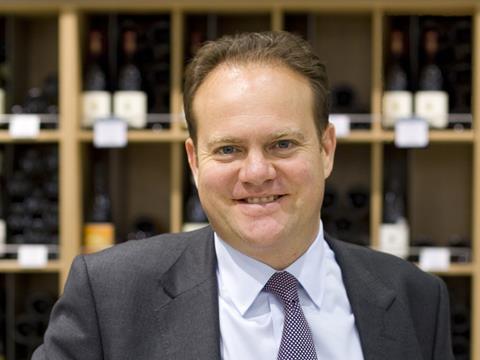
How do you follow in the footsteps of Mark Price, the self-styled Chubby Grocer, whose charismatic leadership transformed Waitrose over 10 hugely successful years?
The answer for Rob Collins? Ask your dad. Sir John knows a thing or two about succession. The former CEO of Shell UK, who turned round the Vestey meat business and oversaw the breakup of National Power, took over from the legendary Sir Stanley Kalms as chairman of Dixons in 2001. And held the position with great distinction for eight years.
“He said to me: ‘Be yourself,’ says Collins. ‘People need to believe in who you are.’”
So who IS Rob Collins? In his first speech as MD, at the Waitrose management conference last February, Collins identified three particular values that defined him: “Achievement, trust and family.” And the most overused word in his vocab, he says, is “team”.
The contrast with his predecessor is stark. Where Price was a showman Collins has kept a low profile throughout his time within the John Lewis Partnership, rising up the ranks almost imperceptibly, first as a John Lewis store manager and then, after a switch to Waitrose in 2007, in a variety of positions in ecommerce, personnel and most recently as retail director.
Even in his first year as MD, Collins has been low key. What’s he been up to? At least once a week he’s been out “getting to know some of our suppliers, one of the great joys of the role”. He’s also recruited a new supply chain director and appointed a new commercial director. But the highlight of his 12 months in charge he cites the May launch of own-label range Waitrose 1.
“It was about repositioning our best offers, to make it clear and easy for customers,” he explains. These 500 existing lines have since grown 20% by volume, which is “really encouraging”. In conjunction with npd - “so central to the magic of Waitrose” - that saw an extra 250 new lines introduced, it “carried on trading strongly over Christmas”, with a 21.4% uplift in sales across the full range.
It’s not the only pleasing aspect of a “smooth” Christmas either, with like-for-like sales up 2.8% over the six-week festive season, and 4.8% overall, “exceeding my expectations”.
But Collins is not complacent about the challenge ahead. Waitrose has been sucked into the price war, like for like sales in the first half were down -1%, profits declined by 17%, and Collins called a halt to the Waitrose space race. What’s more, JLP chairman Sir Charlie Mayfield used the Christmas update to effectively issue a profits warning, citing both deflation and inflation, online channel growth, and “significant change, investment and innovation to ensure the Partnership’s [continued] success”.
Collins insists his decision to scale back was not driven by the need for a reset. “I inherited a fantastic brand,” he says, “At the end of the first half, our operating margin was 4%, which is at the top end of the sector.” And Waitrose is not overspaced, he adds, with average store sizes smaller than its big four rivals. But the time is now right to focus on execution, with judicious tweaks to the Waitrose formula.
“New space has served us well. We’ve built up a much bigger estate, 350 shops excluding Welcome Breaks. We have a compelling offer in our new shops and our newly refurbished shops, and what we have to do is apply that to more of our shops around the country. That will help drive like-for-like growth.”
Snapshot
Age: 46
Lives: Farnham
Family: Married to Fleur, with twin boys (15), and a girl (13).
Born: Kenya
Education: Read Business and Spanish at Edinburgh University.
Career: I worked for Coates Viyella in my year abroad in Argentina. Joined JLP in the graduate recruitment scheme in 1993. Moved to Waitrose as e-commerce director in 2007. Responsible for property from 2010. Promoted to retail director from 2012
What are the most important lessons you have learned about leadership? Two things. I have a huge respect for people, and believe leadership is about getting people to want to do things. Second, beyond leadership, the ability to see through things, having clarity when there’s a sea of options
Desert Island Meal: Prawns for a starter, followed by Beef Wellington, finished off with cheesecake - any cheesecake
Hobbies: Sailing, cycling, golf
Grazing
Collins is banking on a number of new foodservice concepts to achieve this, including bakery grazing areas, sushi counters, juice bars and wine bars as well as new cafes, food to go offers, and enhancements to existing fixtures like BWS.
His inspiration was a trip to the US with then marketing director Rupert Thomas (who took over as commercial director this month following the retirment of Mark Williamson). “We were immediately struck by the number of covers: 200-300 was not uncommon. And we resolved that we needed to become a serious foodservice business.”
With 82 introduced so far, the most fully developed is the new bakery grazing concept (“we’re building some scale now”) while the 23 Sushi Daily counters are “ahead of the budget” agreed with the concession. But the precise mix (or “clustering”) is tailored store by store dependent on the size and location of the store and the demographics.
And despite Tesco’s failure with its in-store Giraffe restaurants, not to mention the impact of its free coffee on cafe sales, Collins is convinced there is an opportunity for dining in, and even wine bars, if he can get the execution right.
“The opportunity for wine bars is smaller: we only have wine bars in seven locations and they all have slightly different designs. We’re on a journey. What we’re learning is you’ve got to create enough seating and enough covers. Worcester has 260 covers, when you include the cafe, the wine bar and the bakery. I went in at 3pm two or three weeks after it opened and the wine bar was full and our cafes are well occupied too.”
Even with free coffee? “Even with free coffee.”
Collins also waxes lyrical about the latest iteration of the foodservice concept at the Barbican store, featuring an Open Kitchen making breakfast, lunch and dinner. “It’s a quarter breakfast, half lunch and a quarter dinner. So it’s well spread across the day. And it features quite a compelling offer that’s being made visibly in front of customers.”
Value for money?
The flipside of not being overspaced is that sometimes there are space constraints (“the walls aren’t made of rubber”) but existing counters are also being evolved. The meat and fish counter at the Barbican store, for example, involves “a rather nice half-way house between a meat and fish counter and a ready meal counter, with opportunities to enhance the product in a quite simplistic way with some herbs and sauces. Almost all our shops have meat and fish counters so that’s something we can roll out across the board.
“There is a huge amount of energy being expended into making [these concepts] a reality. And we are seeing encouraging results in shops where we’ve done it,” he adds, noting 4.9% growth in hospitality sales over Christmas. “And that doesn’t even include Sushi Daily.”
With all this energy being poured into foodservice, is there not a danger Waitrose will forget about the basics? Not at all, says Collins. “Waitrose is all about high quality, high service food retail. What we’ve got to do is to do it even better.”
But what about price? Collins insists, with exchange rates in flux, and competition intense, that Waitrose “will stay very close to the market in respect of pricing, particularly as we go into the next [financial] year, when our hedges expire.”
But how close is “close”? Using The Grocer 33 as a guide, the price premium on a Waitrose basket versus the cheapest retailer increased from 15.5% to 19.2% between 2013 and 2016. And even versus the average it rose from 6.7% to 10.2%. Is Waitrose exploiting its predominantly affluent customers or just buying badly?
Collins bristles. “Let’s look at this. Value is hugely important to me. But what is it? It’s a consequence of quality, provenance and price. And we measure customer perception of it constantly. Last year it improved, which is interesting because we launched a new premium tier. The test for us is: ‘Do customers think the proposition we offer is good value for money?’ And if the answer was no, I would say we absolutely need to be taking action. But at the moment it’s not a problem, though I’m not complacent for one moment, you can’t be.”
“And let’s make sure we compare like for like. Our gammon is not the same as our competitors. All our beef is sourced in the UK.” In the case of fruit & veg, despite steep prices on lines such as blueberries (up to £24/kg), butternut squash (£2.25 each), and tenderstem broccoli (up to £12.50/kg), he insists there is a difference through funding schools on farms in Africa, while the milk Waitrose sells is from cows that spend at least 100 days grazing outside. “In fact, the average was 167 days last year.”
“The question is: do customers attach value to the differences? I believe they do. Where I see an opportunity is in communicating that better. One of my favourite ever Waitrose ads was the milk campaign last spring. It really communicated the difference. But there are a host of examples. We give all our poultry 20% more space than the average. I spoke to all of our farmers at our farming conference about exactly this. Where we do things differently, we have to make sure it is valued and communicated.”
Promos
As rivals have simplified pricing and promotions, Collins also defends the extensive and old-school use of multibuys, and rejects suggestions that Pick Your Own Offers and free coffee are confusing or gimmicks.
“We haven’t done the reset others have done, but over six million customers have signed up to MyWaitrose, and account for over 70% of our sales.” And crucially, both “PYOO and free coffee and newspapers are valued most by our most loyal customers. When our customers say these benefits are dated I’ll worry but that’s not what I’m hearing.”
He’s also hesitant about stripping back ranges, even if it improves Waitrose’s notoriously poor levels of availability. With 17 different tomatoes for sale in my local store (I counted) and similar numbers of sausages and hams, he concedes that “the easiest thing would be to condense the range”. “I could get a warm glow by simplifying the business and making it more efficient but we could easily lose the magic of the brand. If you’re a scratch cook, range is part of the Waitrose difference in terms of choice.That’s not to say there isn’t an opportunity around range, but we need to do it really carefully.”
That said, Collins does concede availability needs to improve and already has, he insists, following the appointment of Wim Van Aalst as supply chain director last August, though our own figures from The Grocer 33 showed no improvement in the second half with availability stuck at 94%.
“I could get a warm glow by simplifying the business and making it more efficient but we could easily lose the magic of the brand”
The most eye-catching development to date has been a decision to bring forward supplier deliveries “to get stock out to our shops earlier”. This “massive change” has improved availability and grown the life of products, helping reduce waste by 11% in the past year, though with Waitrose this week signing up to a trial of the Olio food waste app, Collins “would like to see “a dramatic” further improvement.
Waitrose has also been able to extend the shelf life of goods partly through cold chain improvements and partly on the back of packaging enhancements such as the skin packaging on Waitrose beef. “It wraps round the beef. It’s no long surrounded by air. We’ve done a lot of tests to show it extends the life of our beef and it uses less packaging so it’s a win win for your Waste Not Want Not campaign. So we have extended the life of some products but on the back of either be changes to packaging or to the cold chain but there should always be a reason that sits behind it.”
But it’s not just the stores that need work. As the Partnership’s profit warning made plain, Collins also needs to prepare the business for further online channel migration. The paltry 0.8% growth in online sales over Christmas reflected a conscious decision to stop running heavily incentivised promotions.
“The loyal core is actually growing,” he insists, vowing to make Waitrose.com profitable on a “fully loaded” basis. And while naturally cautious he will be “deeply disappointed if I haven’t got a more positive number than that this time next year”.
With the Ocado contract also up for renewal this year Collins is similarly cautious on the renegotiation, though the “commercial relationship works well for us both. And that’s the way it needs to work. The whole philosophy is around getting win wins.”
There’s no intention of scrapping the Waitrose.com website, however, despite the low growth and Ocado’s obviously superior online capabilities.
“Waitrose.com is a really important part of who we are. If you look at ratings and reviews, I can eat something at home, be curious, and see what our customers think of that online. There’s a load of content, Waitrose TV, there’s recipes, inspiration, ideas, community based stuff. It depends if you take a channel led view or a customer led view. I think increasingly these things link together. We couldn’t have done PYOO if we hadn’t had our own website, for example.”
But if the Ocado partnership is important, it’s as nothing to the relationship with JLP. Collins is a big fan of the Partnership and the values of ‘collective reward’ it espouses. And having given the go ahead, as the then retail director, for the trial of the now hugely successful click & collect initiative, he proved that the two sparring partners could work together after all.
The two even share the same advertising agency these days (Adam & Eve).
So what, I ask, is the point of the Waitrose pillows and Waitrose kitchenware newly promoted in my local store? Surely John Lewis is the non-pareil of household and kitchenware brands?
There’s a slightly embarrassed silence. “Watch this space. You can definitely expect to see us working even more closely together to make sure we unlock all the capabilities John Lewis and Waitrose have.”
Looks like Collins will be spending plenty more time out of the limelight.







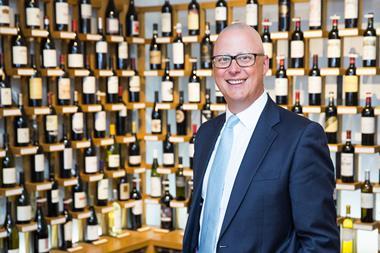
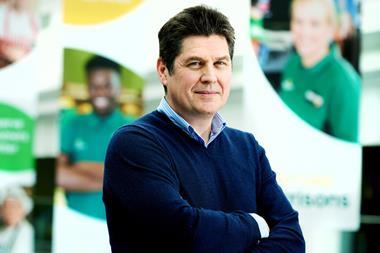

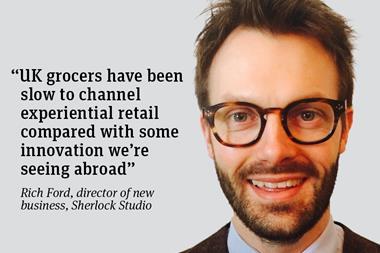
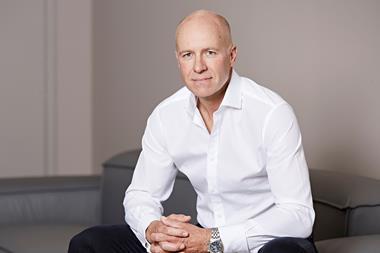
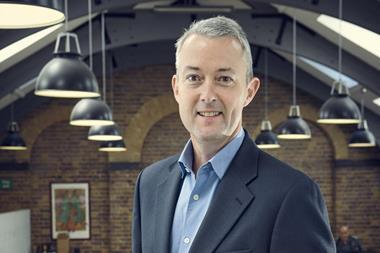

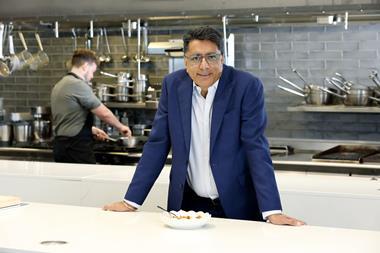

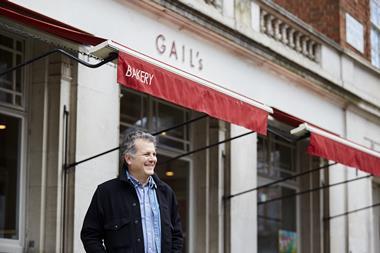


No comments yet